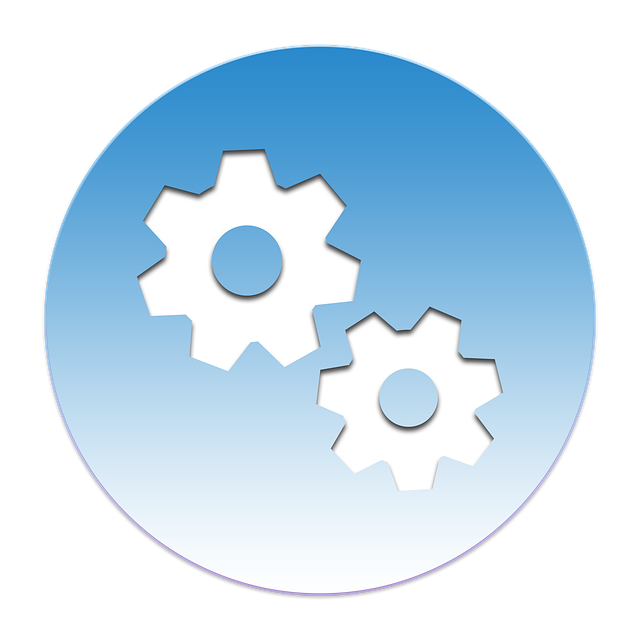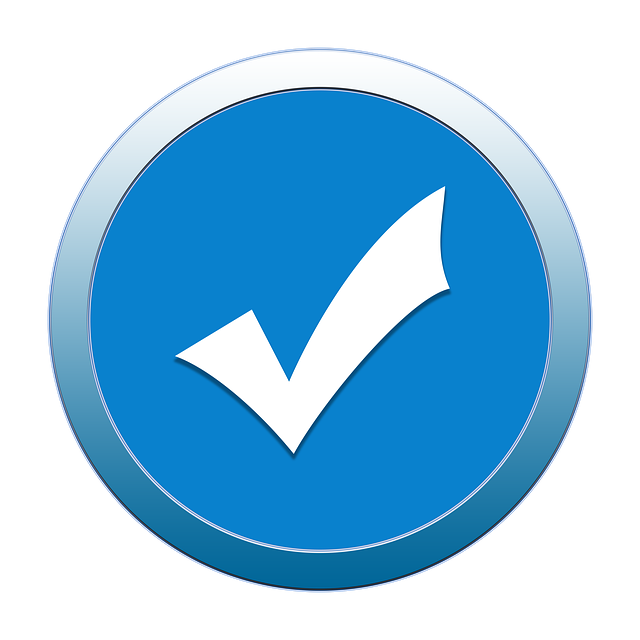Creating effective online courses involves strategic planning: identify target audience, design diverse modules, use e-learning platforms with tools for engagement and plagiarism prevention. Choose a platform with robust features for optimal student experience. Design engaging materials using varied media, logical organization, and interactive tools for immediate feedback. Market successfully through niche segmentation, strong branding, promotions, and data analysis to foster community and improve course performance, leveraging the website's potential.
In today’s digital landscape, creating and selling online courses has emerged as a powerful method for sharing expertise and generating income. Building your course from scratch allows for complete control over content, delivery, and branding—a significant advantage in establishing authority within your niche. However, the process can be daunting for beginners, with its many moving parts: curriculum design, platform selection, marketing strategy, and more. This article provides a step-by-step guide to building an online course from scratch, equipping you with the knowledge and tools to create high-quality educational content on your own website, effectively engaging and empowering your audience.
- Plan Your Course Content and Structure
- Choose a Platform for Hosting Your Website
- Design Engaging Course Materials and Lessons
- Market and Sell Your Online Course Effectively
Plan Your Course Content and Structure

Creating a well-structured online course involves meticulous planning of your content. Begin by identifying your target audience and their expectations from the course. This understanding will guide you in designing relevant, engaging modules that cater to various learning styles. Divide your course into logical segments or modules, ensuring each focuses on a specific topic or skill. For instance, if developing a photography course, modules could include camera basics, composition techniques, lighting, editing, and advanced photography concepts. Each module should have clear objectives, ensuring learners understand what they will gain from completing it.
When planning content, leverage e-learning platforms to organize your materials effectively. These platforms offer tools for delivering videos, text, interactive elements, quizzes, and assignments, allowing you to create a dynamic learning environment. Structure each lesson with an introduction, main content, activities, and a summary. Incorporate diverse learning strategies such as case studies, discussions, and hands-on projects to enhance engagement. For example, using online research tools, assign learners the task of finding and analyzing industry trends related to their module topic. This not only reinforces learning but also encourages critical thinking and independent research skills.
To maintain course integrity and prevent plagiarism, implement robust measures on your website or e-learning platform. Utilize plagiarism avoidance online research tools that check submitted assignments against vast databases to ensure originality. Regularly review learner submissions, provide constructive feedback, and encourage proper citation practices. A well-structured course with a clear learning path not only enhances the learner’s experience but also ensures they derive maximum value from each module. Visit us at plagiarism avoidance online research tools anytime for more insights on effective content management strategies.
Choose a Platform for Hosting Your Website

Choosing a platform to host your website is a crucial step in building an online course from scratch. This decision significantly influences how effectively you can engage students, deliver content, and track progress. Among the plethora of options available, platforms like Teachable, Thinkific, and Kajabi stand out for their robust features tailored to course creators. These tools not only offer seamless website hosting but also integrate learning management systems (LMS) that streamline course organization and student interaction. For instance, Teachable allows users to customize their websites with drag-and-drop elements, ensuring a professional look despite minimal design experience.
Effective study habits are integral to the success of any online course. A platform that supports these habits by providing features like automated email reminders for assignments, discussion forums for peer-to-peer learning, and analytics dashboards for tracking student performance can greatly enhance engagement. Cultural awareness is another aspect that enhances the online learning experience. Platforms with diverse content libraries and localization options cater to a global audience, promoting inclusive education. For instance, Thinkific’s ability to embed videos from YouTube or Vimeo allows instructors to incorporate cultural content from around the world, enriching the learning journey.
Creative writing prompts are not just for English classes; they can stimulate critical thinking and enhance communication skills across disciplines. Integrating such prompts in your online course can make learning more interactive and enjoyable. Many platforms offer content creation tools that make it easy to embed these prompts as part of assignments or discussions. Kajabi, for example, provides a user-friendly interface for designing engaging quizzes and surveys that encourage creative thinking. Moreover, leveraging plagiarism avoidance online research tools (like Turnitin) within your chosen platform ensures academic integrity and encourages original thought.
Ultimately, selecting the right hosting platform involves balancing functionality, cost, and personal preferences. By considering factors like website customization options, student engagement features, cultural inclusivity, and content creation tools, you can create an online course that not only meets but exceeds expectations. Remember, a well-hosted website is more than just a digital storefront; it’s the gateway to transformative learning experiences for your students. Give us a call at Plagiarism Avoidance Online Research Tools for expert advice tailored to your specific needs.
Design Engaging Course Materials and Lessons

Designing engaging course materials is a crucial step in building an effective online learning experience. To captivate your audience, tailor lessons to their needs, and ensure comprehension, consider incorporating diverse media formats—such as videos, infographics, and interactive simulations—to present information. For instance, public speaking guides or math problem-solving tutorials can be enhanced with video demonstrations, allowing learners to follow along at their own pace. This multi-modal approach not only caters to different learning styles but also increases engagement and retention rates.
Organize your content logically, breaking it down into manageable modules or sections, each focusing on a specific topic or skill. Within these modules, use a mix of textual explanations, case studies, and real-world examples to illustrate concepts. For example, when teaching résumé writing assistance, provide samples of effective résumés with annotations highlighting key elements. This contextual learning approach helps students make immediate connections between theory and practice. Additionally, integrating team collaboration tools into your course can foster interactive discussions and peer learning experiences, enhancing the overall educational value.
Leverage the website as a dynamic resource by embedding interactive quizzes, polls, and discussion forums to encourage active participation. These elements not only break up content delivery but also provide immediate feedback, allowing students to assess their understanding. Incorporate mental health resources or breaks within lessons to address student well-being, recognizing that learning is optimized when minds are both stimulated and at ease. Data suggests that incorporating regular breaks can improve focus and reduce cognitive load.
To ensure academic integrity, regularly review and update your course materials, drawing on reliable sources and expert perspectives. Consider peer reviews or beta testing to gather feedback and refine the course before launch. Remember, a well-designed online course is not merely informative but also interactive and supportive, leaving students equipped with new skills and knowledge while fostering a sense of community. Find us at academic integrity for more insights into creating impactful learning experiences.
Market and Sell Your Online Course Effectively

Marketing and selling your online course effectively is a multi-faceted strategy that requires a deep understanding of your target audience, strong branding, and a variety of promotional tactics. Firstly, define your niche and position your course to meet specific needs within it. Utilise learning strategies like segmentation to tailor content to different student preferences, ensuring accessibility and engagement. For example, offering both video tutorials and written materials can cater to visual and kinesthetic learners alike.
Building an appealing brand is crucial. Develop a compelling course description that highlights unique selling points, benefits, and how it solves common problems within your niche. Incorporate virtual communication strategies, such as live Q&A sessions or online forums, to foster community and debate preparation among students, enhancing engagement and retention. A strong brand identity, combined with effective virtual communication, can create a loyal following and positive word-of-mouth marketing.
When it comes to selling, leverage multiple channels, including social media, email marketing, and partnerships with influencers or relevant websites. Consider offering discounts or bundle deals to encourage purchases. For instance, promoting a “foundational course” at a discounted rate for those enrolling in more advanced courses can create a sense of urgency and increase sales.
Finally, analyse data from your marketing and sales efforts to refine strategies. Track key metrics like conversion rates, student retention, and feedback to continually improve the course and its promotional approach. Give us a call at Team Collaboration Tools for expert guidance on leveraging these strategies to maximize the success of your online course.
Building an online course from scratch requires a strategic approach, encompassing content planning, platform selection, engaging design, and effective marketing. Key insights include prioritizing a structured content plan for your Website, choosing a suitable hosting platform to showcase your offerings, creating compelling lessons that capture students’ interest, and leveraging marketing strategies to reach and engage your target audience. By following these steps, educators can successfully launch and grow their online courses, capitalizing on the flexibility and accessibility of digital learning platforms. This comprehensive guide empowers readers with actionable takeaways, enabling them to navigate the process with confidence and create a thriving online educational environment.
About the Author
Dr. Sarah Johnson, a renowned online education specialist, is an expert in crafting comprehensive digital courses. With a PhD in Educational Technology and over a decade of experience, she has developed curricula for top online platforms. Her approach blends innovative pedagogy with user-friendly design, ensuring engaging learning experiences. Sarah is a contributing author to the Journal of Online Learning and actively shares her insights on LinkedIn, where she mentors educators worldwide.
Related Resources
Here are 7 authoritative resources for building an online course from scratch:
- Coursera Learning Guidelines (Platform Document): [Offers insights into best practices for designing and creating effective online courses.] – https://www.coursera.org/learn/course-design
- EdX Course Creation Handbook (Education Platform): [Provides a comprehensive guide on how to build high-quality online courses, covering structure, content, and technology.] – https://edx.org/handbook
- University of California, Irvine: Online Learning Best Practices (Academic Study): [Presents research-based guidelines for creating engaging and effective online education experiences.] – https://online.uci.edu/pedagogy/best-practices/
- U.S. Department of Education: Online Learning and Distance Education (Government Portal): [Offers resources, guides, and statistics on the growth and effectiveness of online learning in the U.S.] – https://www2.ed.gov/topic/technology/digital-learning
- LinkedIn Learning: E-Learning Course Creation (Online Tutorial Platform): [Provides video tutorials and step-by-step guidance on building engaging online courses, including tips on using various e-learning platforms.] – https://www.linkedin.com/learning/
- Articulate e-Learning Heroes Community (Online Community): [An active community of e-learning professionals sharing insights, templates, and best practices for creating high-quality online courses.] – https://community.articulate.com/
- World Economic Forum: Future of Skills and Jobs Report (Industry Report): [Explores trends in skill development and the future of work, including insights into the importance and creation of online learning.] – <a href="https://www3.weforum.org/docs/WEFFutureofSkillsandJobs2020.pdf” target=”blank” rel=”noopener noreferrer”>https://www3.weforum.org/docs/WEFFutureofSkillsandJobs_2020.pdf






















































